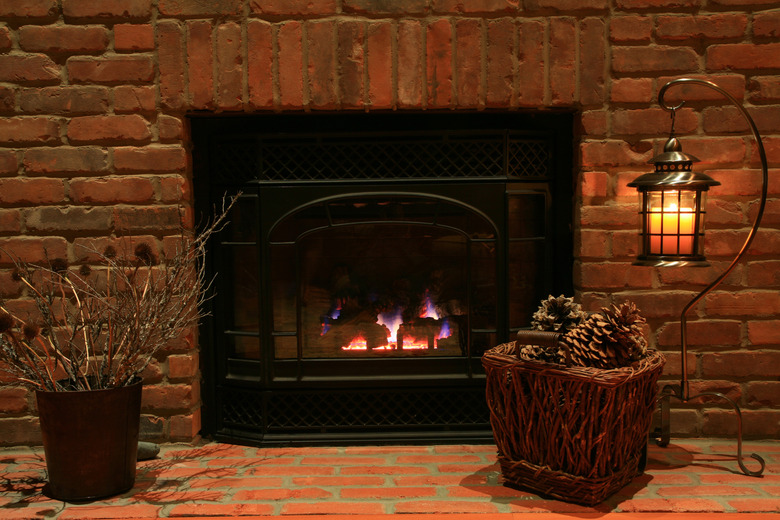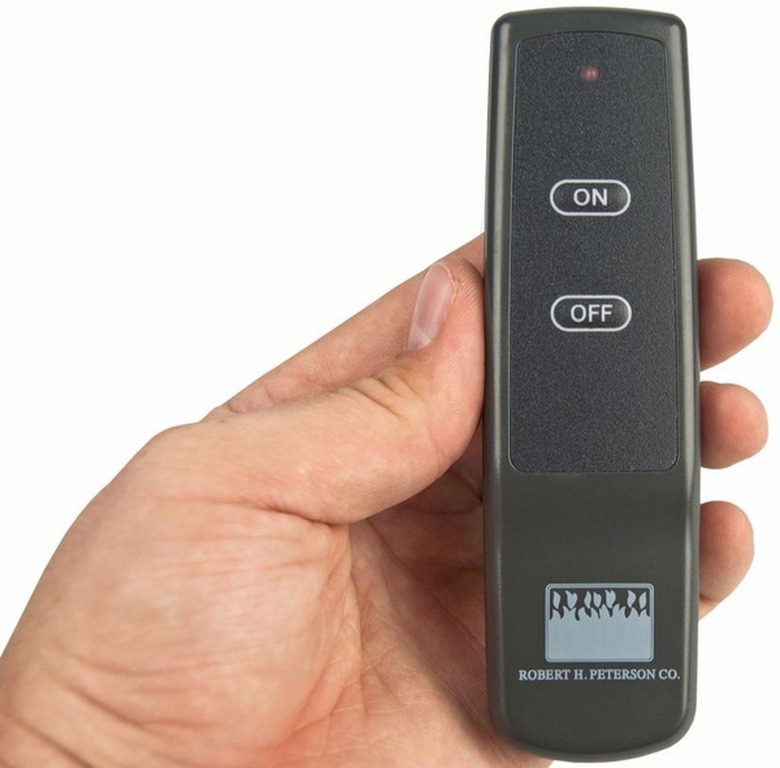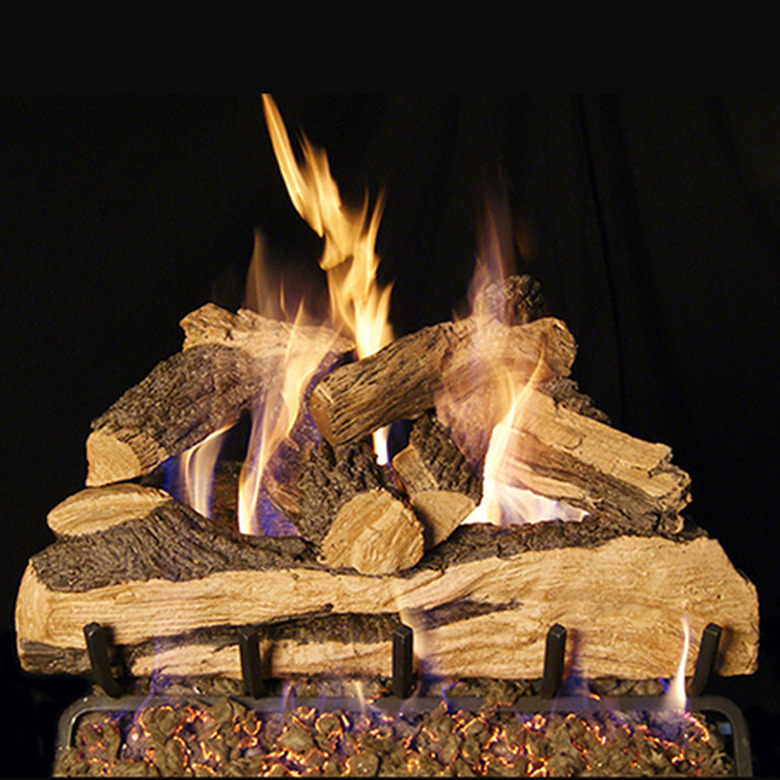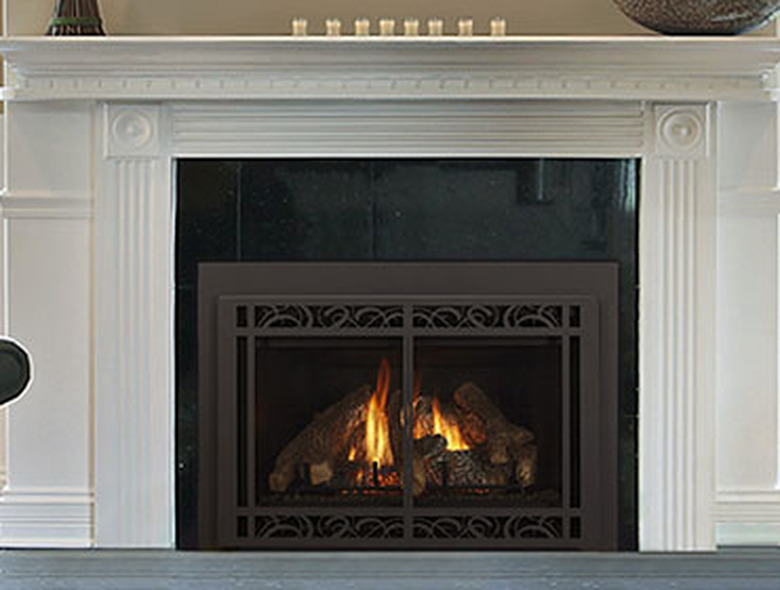Can I Convert A Wood Fireplace To A Gas Fireplace?
Conventional masonry wood-burning fireplaces are ideal for converting to gas because they already have the look of a traditional fireplace, and all you have to do is install the gas-burning guts inside the firebox. You can make the conversion by simply adding a gas log set or by installing a self-contained gas insert unit with its own chimney.
Converting to natural gas or propane is not only a doable project in most cases, it's now become the norm, especially for homes in metropolitan areas, where burning restrictions on wood are common. While it's possible to install and hook up a gas fireplace yourself, you'll need a professional to add a gas line (and probably an electrical supply) and to clean and inspect your old fireplace and chimney. Typically, it's best to use a fireplace contractor or installer for most or all of the job.
Why Convert to Gas?
Why Convert to Gas?
The crackle, smell and glow of a real wood fire speak to the souls of human beings. But that's pretty much where the benefits of wood-burning stop. Compared to gas, burning wood is a lot of work. It's also highly polluting and is restricted by pollution laws in many areas. And, unless you have a lot of trees on your property and are willing to cut your own firewood, burning wood is expensive. Buying a cord of firewood can easily cost $200 to $300. Then there's the residue that gums up your chimney and creates a fire hazard. This debris needs to be cleaned out by a professional chimney sweep every year or two, at a cost of $100 to $150 a pop.
Finally, burning wood in a conventional fireplace is highly inefficient as a home heating source. The problem is that while the fire radiates a lot of heat into the room, it's also using up heated interior air for combustion, and even more heated air is getting sucked up the chimney all the time. As a result, heating with a conventional fireplace is estimated to be about 10 to 30 percent efficient, meaning 70 to 90 percent of the wood's heat energy is wasted.
Gas fireplaces start with the push of a button or flick of a switch and don't need tending or manual reloading of fuel. They don't create soot or ash, and they can be shut off when you leave the room without concern about stray embers or coals starting a house fire. Burning gas is much cleaner than wood and is not restricted by pollution laws. Finally, some types of gas fireplaces heat far more efficiently than their wood-burning counterparts.
The many benefits of gas may make conversion an easy decision for you, but be aware that there may be no turning back. If you live in an area where wood-burning fireplaces are prohibited in new construction, old existing fireplaces are probably "grandfathered" by law. If you convert yours to gas, you won't be able to change your mind later and start burning wood again (although you may be allowed to use an EPA-certified wood stove or fireplace insert).
Is Your Fireplace Suitable for Conversion?
Is Your Fireplace Suitable for Conversion?
You can get a quick answer to this question by having a professional chimney sweep come out for a cleaning and inspection. The chimney and firebox (where the fire burns) must be clean for a thorough inspection. If the masonry isn't in bad shape, chances are your fireplace will be suitable for gas, but if there are structural problems with the chimney, you might need to consult a masonry contractor.
Tip
Do not proceed with a gas conversion without a professional inspection. If the gas fire relies on the existing chimney for exhaust, a problem with the chimney could lead to dangerous gasses ending up in the house.
Options for Converting to Gas
Options for Converting to Gas
Gas-burning systems for conversion come in two basic types: log sets and inserts. Log sets are the simpler, cheaper and less efficient of the two. They consist of little more than fake logs (and embers and other real-fire simulations) with a gas burner and electrical controls.
There are both vented and vent-free log sets are available. Vented sets usually use the existing masonry chimney to exhaust the byproducts of burning gas—namely, carbon monoxide and water vapor. Vent-free log sets do not require ventilation, and the byproducts of gas combustion are simply exhausted into the house. Not surprisingly, there is much debate about whether vent-free fireplaces are good for indoor air quality, and some municipalities don't allow them, so you should look into this before deciding to go vent-free.
Gas fireplace inserts are essentially metal boxes that contain a gas burner, fake logs, controls and any special features, such as heating channels and blower fans to send heat into the room. Most inserts are ventilated with a direct vent, a round pipe with two concentric chambers. The outer chamber brings in the air necessary for the fire combustion, while the inner chamber exhausts the byproducts from the fire. Because the combustion air is drawn from the outdoors, there is no loss of heated indoor air for combustion. The front of the fireplace typically is sealed with glass, so there is no loss of indoor air going up the exhaust vent, either. This makes direct-vent inserts about 70 to 85 percent efficient—much better than vented log sets and, of course, traditional wood-burning fireplaces.
Some gas inserts use a conventional one-way vent, called a B vent, that works just like a regular chimney and exhausts the fumes from the fire. These inserts are open at the front and use indoor air for combustion, so they're about 20 to 35 percent less efficient than direct-vent units.
The Conversion Process
The Conversion Process
Converting a traditional masonry fireplace to gas starts with bringing gas (or propane) piping to the fireplace (usually from below) and up into the firebox. This can be added by a plumber or HVAC contractor or a licensed gas fireplace installer. Gas fireplaces have electronic pilot lights and controls that need an electrical connection, so an electrician or fireplace contractor installs circuit cable, usually tapping into an existing household circuit. They may also install a wall switch for turning the fire on and off.
The next steps depend on the type of gas unit. For direct-vent gas inserts, a fireplace contractor installs a direct vent down through the existing chimney. For a standard vented log set, the contractor installs some type of locking device that keeps the fireplace damper open (to prevent accidental closing of the damper and the resulting risk of carbon monoxide poisoning).
The insert or log set is then put into place and hooked up to the gas and electrical supplies. A direct-vent insert is also connected to its chimney. Once the fake logs, embers and coals are set just right, sealed fireplaces are fitted with their glass fronts, and all fireplaces are tested for proper operation. Finally, trim, screens, glass doors and other decorative features are added to complete the job. The whole project usually takes a few hours, not counting the gas and electrical supply installation.
The Cost to Convert
The Cost to Convert
All together, installing a gas log set can cost between $500 and $1,200, including the equipment and materials. A gas fireplace insert usually costs between $2,000 and $5,000. It's probably most cost-effective to have a fireplace contractor take care of the entire job, including the gas and electrical hookups. The one thing you'll likely have to contract separately is the chimney cleaning and the inspection (although a fireplace contractor can also do this), which should cost between $100 and $150.




